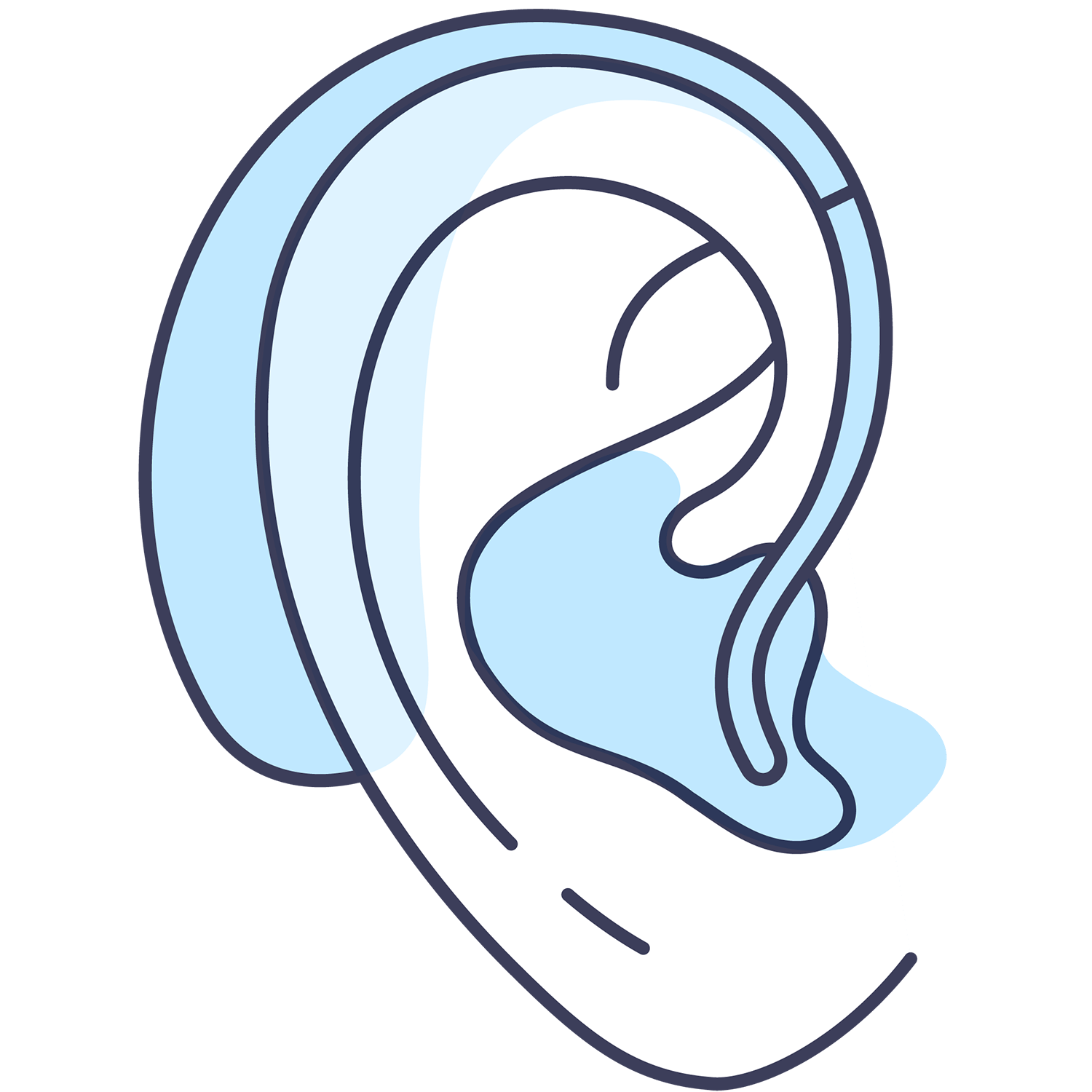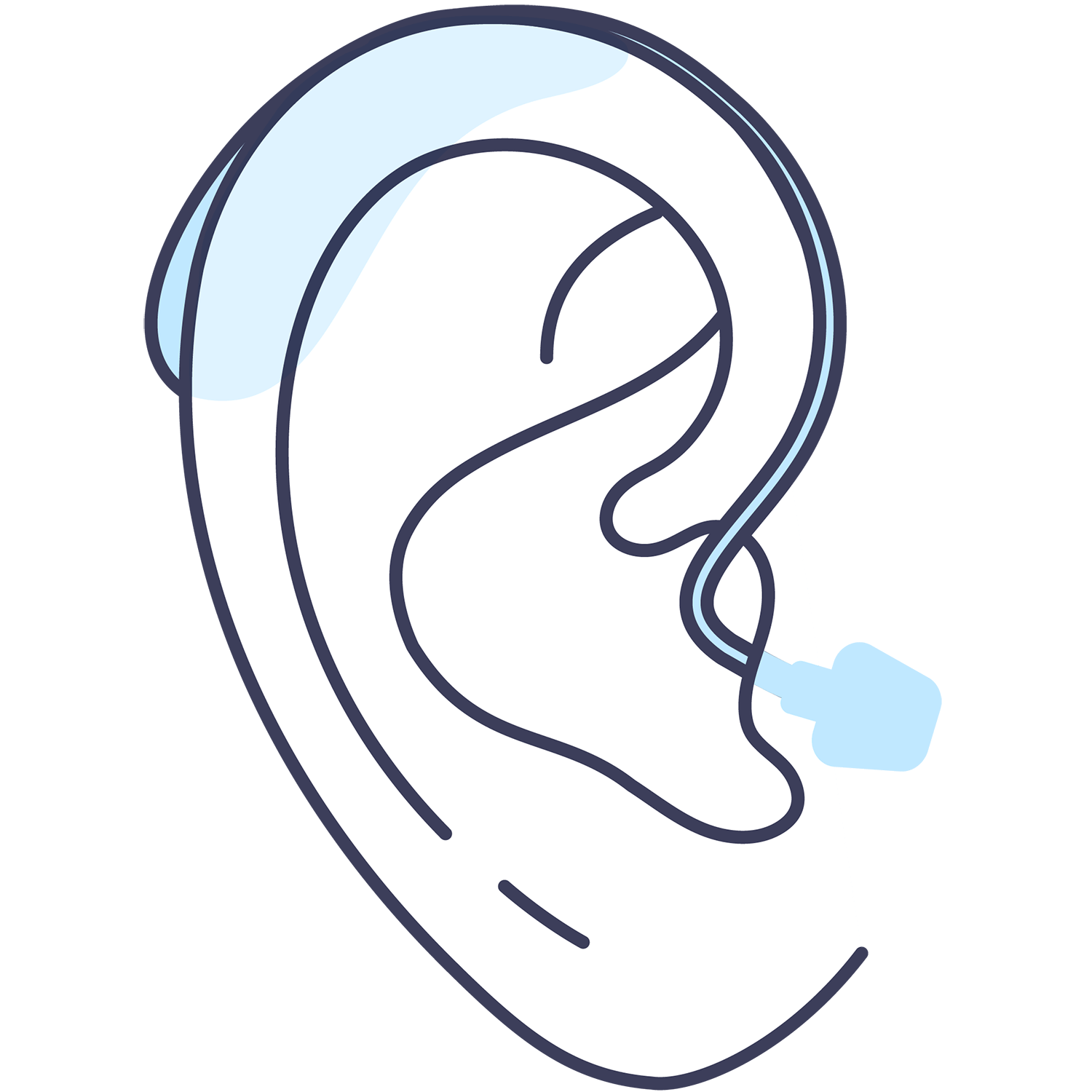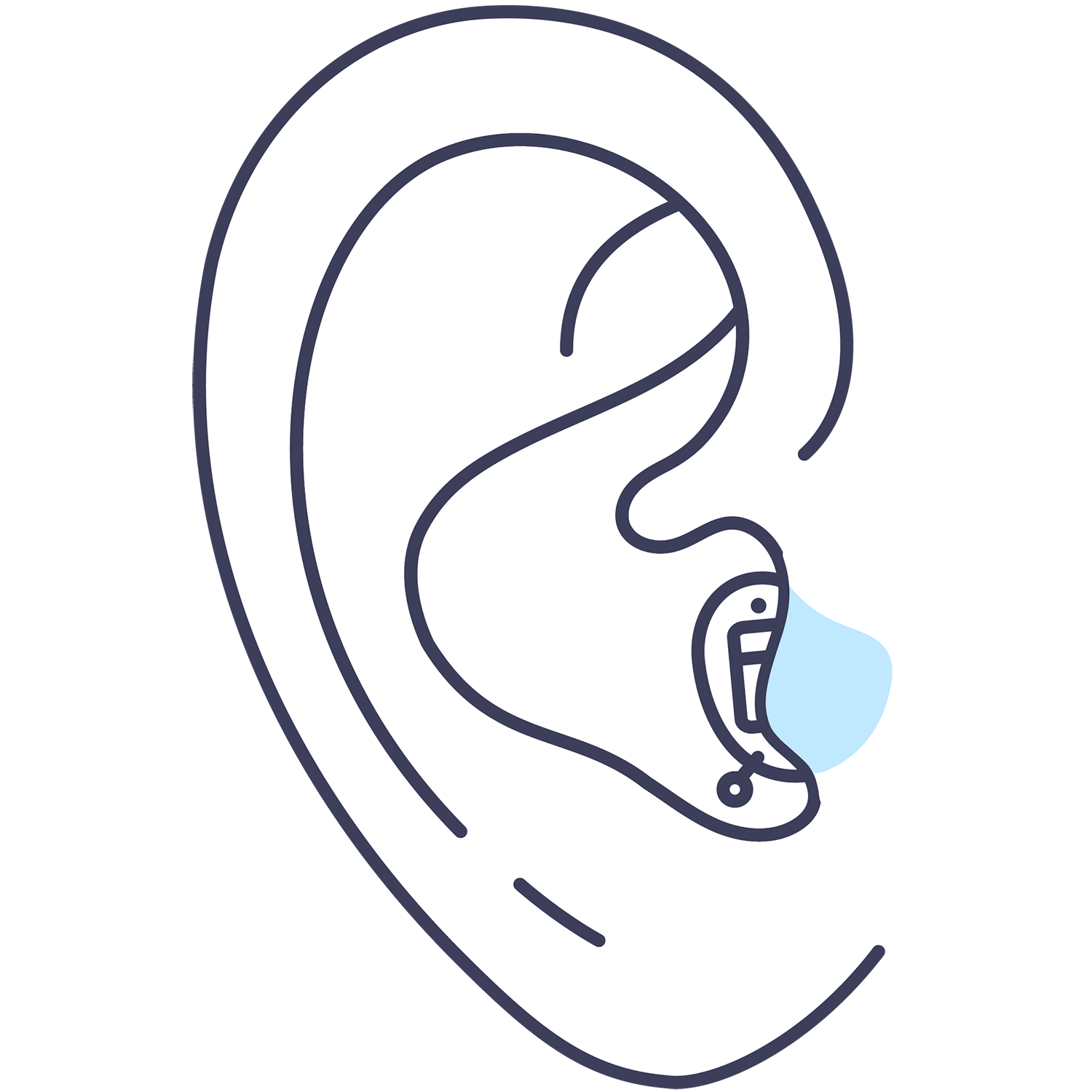Hearing Aid Styles
Hearing aids come in a variety of styles, each designed to suit different needs and preferences. The right style for you will depend on your specific hearing requirements and lifestyle.

Behind-the-ear (BTE)
BTE hearing aids are among the most popular options. They rest comfortably behind the ear and connect to a small receiver placed in the ear canal. These devices are highly versatile, capable of accommodating a wide range of hearing losses, and are simple to maintain.

Receiver-in-canal (RIC)
RIC hearing aids resemble ITC devices but feature a receiver that sits directly in the ear canal, connected by a thin wire. They are discreet, and comfortable, and strike an excellent balance between power and subtlety.

In-the-ear (ITE)
ITE hearing aids are smaller than BTE devices and fit entirely within the ear. Their discreet design makes them a great choice for those seeking a less noticeable option. However, they may not provide the same level of amplification as BTE models and might not be ideal for severe hearing loss.

In-the-canal (ITC)
ITC hearing aids are even more compact than ITE models, sitting partially in the ear canal. While they offer exceptional discretion and comfort, they may not provide as much power as ITE or BTE devices.
Which style is right for you?
With so many styles to choose from, finding the right hearing aid can feel daunting. At Shelby Hearing Center, our team of experts is here to guide you in selecting the perfect device for your unique needs and preferences.
Hearing Aid Features
Modern hearing aids offer a variety of features designed to improve your hearing experience and add convenience to daily life. Some of the most common features include:
The features you prioritize will depend on your hearing loss, daily activities, and personal preferences.
For instance, those with severe hearing loss might require powerful amplification, while individuals in noisy environments may benefit most from advanced noise reduction.
At Shelby Hearing Center, our audiologists will work with you to identify the features that align with your lifestyle and hearing goals.
